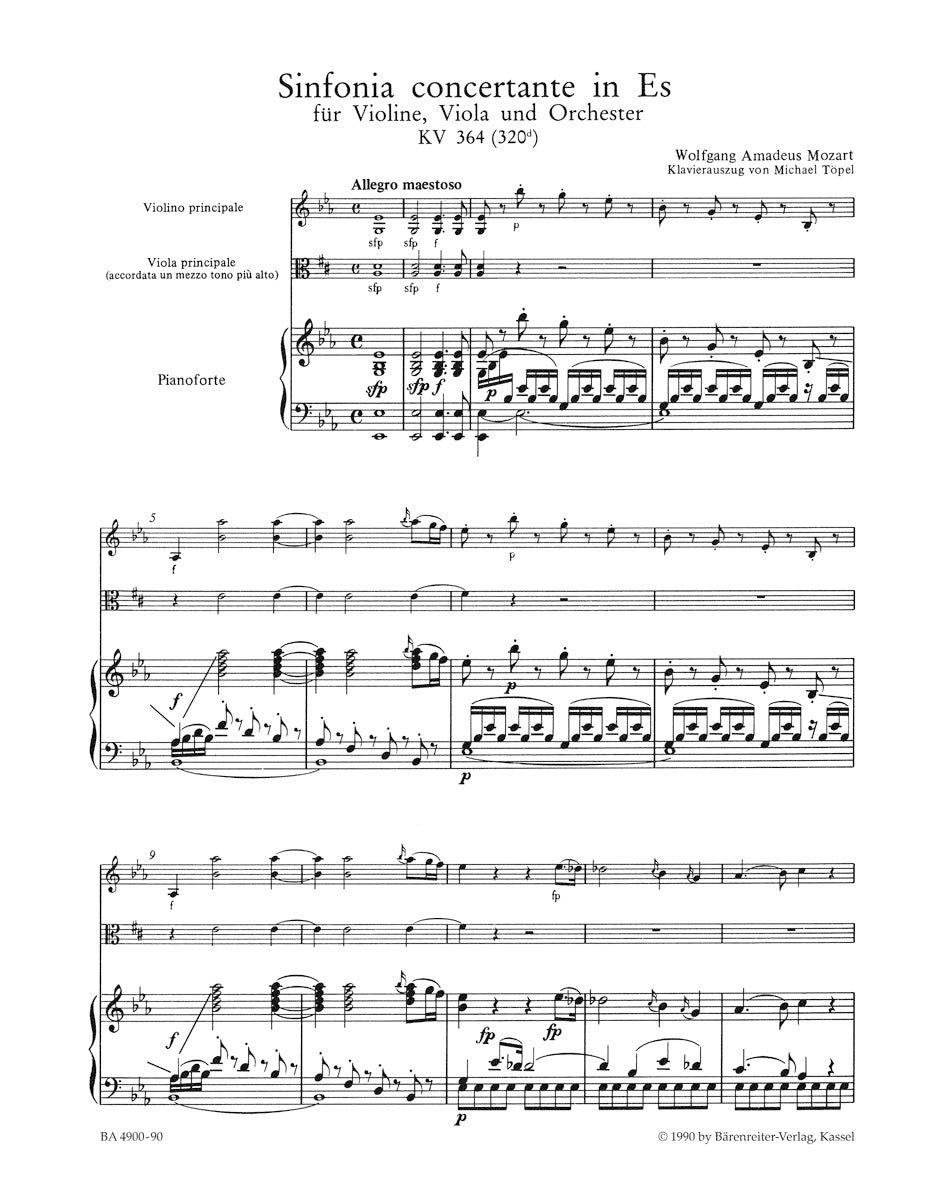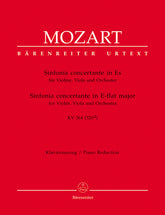


BARENREITER - 345062
Mozart Sinfonia concertante in E flat major K 364
Composer: Wolfgang Amadeus Mozart
Publisher: Barenreiter
Instrument: Mixed
Quantity:
Pickup available at Juilliard Store
Usually ready in 2 hours
Mozart Sinfonia concertante in E flat major K 364
Juilliard Store
Pickup available, usually ready in 2 hours
144 West 66th Street
New York NY 10023
United States
Editor: Mahling, Christoph-Hellmut
Arranger: Töpel, Michael
Orchestral scoring : V-solo/Va-solo/2Ob/2Hn/2V/2Va/Vc/double bass
Product format: piano reduction, part(s), Urtext edition
Binding: Stapled
Pages / Format: 47/16/16/16 - 31,0 x 24,3 cm
There is no reference to the origin, occasion or a performance of the Sinfonia concertante in E-flat for Violin, Viola and Orchestra, K. 364 (320d) because in all probability it was composed in Salzburg (presumably in summer or early autumn, 1779): Mozart seems to have had no reason to write about it. It was apparently in Paris that he first had the occasion of giving the genre of the “Symphonie concertante” his special attention. On April 5, 1778, he wrote to his father: “Now I shall write a sinfonie concertante for flute wendling, oboe Ramm, Punto horn, and Ritter bassoon”. Even more discouraging must have been the fact that he had similar difficulties in Paris in having the works performed as he had in Mannheim. After the organizier of the Concerts spirituels, Le Gros, contrary to his promise, did not include the mentioned “sinfonie concertante” in his program.
Mozart had no reason to compose any more for this genre in Paris. After Mozart’s return to Salzburg, he might have been eager to introduce the new genre there, especially since adequate instrumentalists were available. Also the choice of the solo instruments (violin and viola) in the work presented here was probably influenced by the popularity of this instrumental combination in Salzburg at that time.
Mozart had no reason to compose any more for this genre in Paris. After Mozart’s return to Salzburg, he might have been eager to introduce the new genre there, especially since adequate instrumentalists were available. Also the choice of the solo instruments (violin and viola) in the work presented here was probably influenced by the popularity of this instrumental combination in Salzburg at that time.

